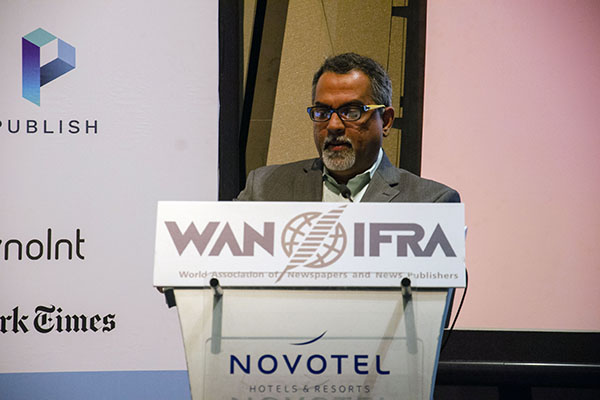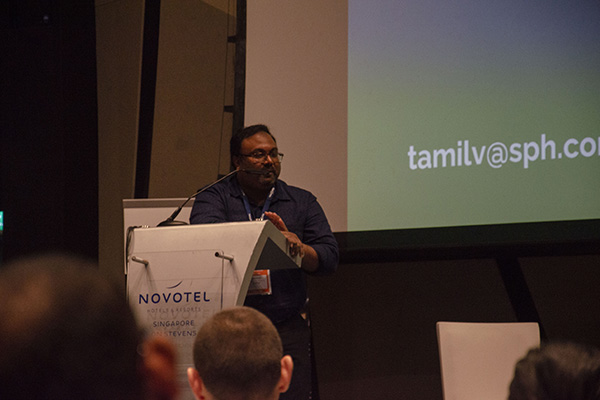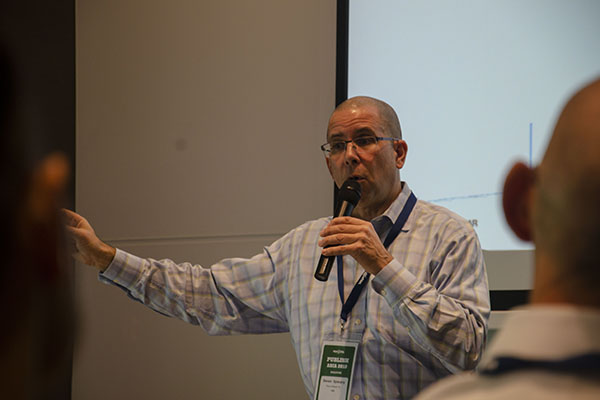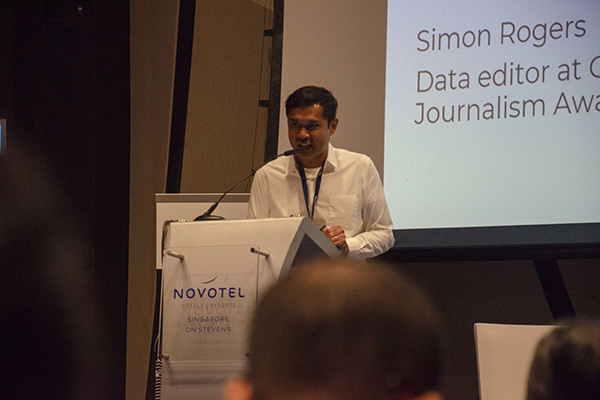How News Organisations can Reinvent Themselves
Post Date: 03 Jul 2019
 Mr Raju Narisetti, Professor of Professional Practice and Director, Knight-Bagehot Fellowship in Economics & Business Journalism, Columbia University, the USA at the closing ceremony on the second day of the event. (PHOTO: Elizabeth Victoria)
Mr Raju Narisetti, Professor of Professional Practice and Director, Knight-Bagehot Fellowship in Economics & Business Journalism, Columbia University, the USA at the closing ceremony on the second day of the event. (PHOTO: Elizabeth Victoria)
Are newsrooms dying? How will news organisations survive this era of fake news? All these and more were addressed during the Publish Asia conference. Held over May 8 and 9, the event gave media executives an insight into the evolution and modernisation of business and the mass media.
WAN-IFRA, the event organiser, welcomed media executives from over 30 different countries for masterclasses and conference sessions, where they addressed the management and issues faced by newspaper publishers.
Over the two days, the conference sessions and networking events covered on saving the news business, media engagement and business enhancement.
One of the many sessions included The Way Forward: How to Save the News Business & Why Only Journalism will Save Journalism, with guest Juan Senor, President of Innovation Media Consulting Group in the United Kingdom (UK).
Juan demonstrated how news publishers could survive in the digital age through content-driven innovation. Such as changing from free to premium content subscriptions and magnifying reading revenue.
“Print is not dead, we just need to reinvent it,” he emphasised.
Tamilavel, News Editor and Digital Editor of the Tamil Murasu, Singapore Press Holdings (SPH), was another speaker who covered on the digital news and its transformation.
“At the end of the day, we want to cater to all ages,” noted Tamilavel. To this end, Tamil Murasu embarked on a consumer research to find out more about what readers want in this time and age.
 The news Editor and Digital Editor of the Tamil Murasu, Mr Tamilavel, shared on his experiences in the Singapore media industry on May 9, 2019. (PHOTO: Elizabeth Victoria)
The news Editor and Digital Editor of the Tamil Murasu, Mr Tamilavel, shared on his experiences in the Singapore media industry on May 9, 2019. (PHOTO: Elizabeth Victoria)
 Steven Spieczny, covering a session on “How Subscription Actually Works” at the News Conference on May 9, 2019. (PHOTO: Elizabeth Victoria)
Steven Spieczny, covering a session on “How Subscription Actually Works” at the News Conference on May 9, 2019. (PHOTO: Elizabeth Victoria)
According to their findings, people are actively seeking out new content daily and he realised that viewers tend to rely on information more when it comes from authoritative figures and/or their peers and family.
This strategy helped his company to continue moving forward with their print newspaper and also enabled them to jump onto the digital media bandwagon as well.
Other than that, Driving Editorial Decisions with Data was a session dedicated to those who wanted insight on how they can, and should, make news decisions based on the facts and data that they have.
 A talk on the growth of technology in Myanmar by Mr Yan Naung Oak. (PHOTO: Elizabeth Victoria)
A talk on the growth of technology in Myanmar by Mr Yan Naung Oak. (PHOTO: Elizabeth Victoria)
To learn more about media in other countries, speaker Yan Naung Oak, Senior Advisor, Phandeeyar Innovation Lab, Myanmar & Open Data Advocate from Myanmar, shared of his role as an infomediary.
Oak shared on how despite Myanmar being as less developed as people thought they were, they are in fact very up to date in their technological game.
He also stressed on how their print media is too struggling due to the high technological competition that outdo the inconvenience of print media.
“In Myanmar, even though many people don’t own good phones, they still prefer to go online to read, and this is a problem for us,” said Oak.
Through these sessions, media companies have the opportunity to learn more about how they can improve their individual media systems.
By Elizabeth Victoria and Valerie Ong
